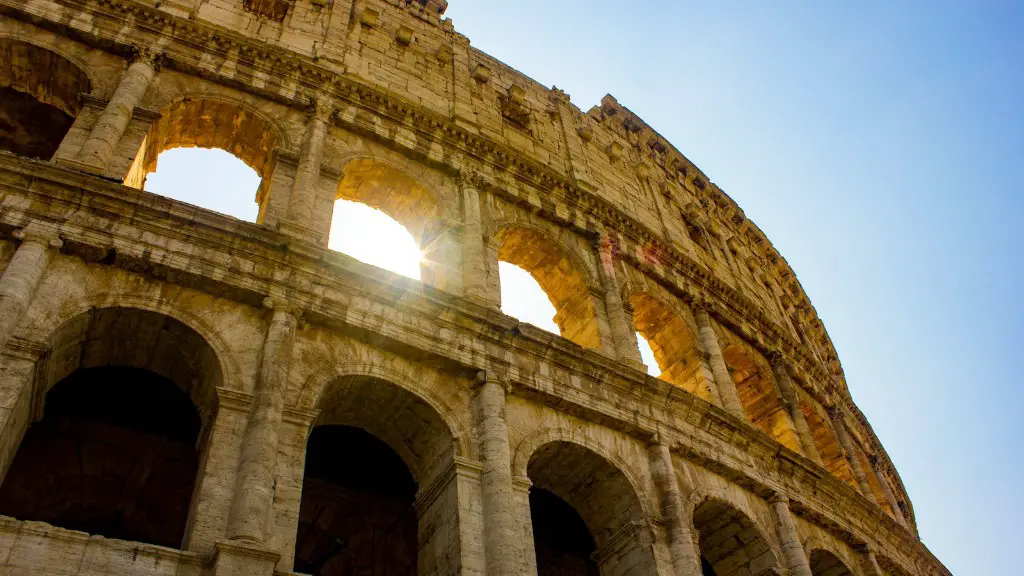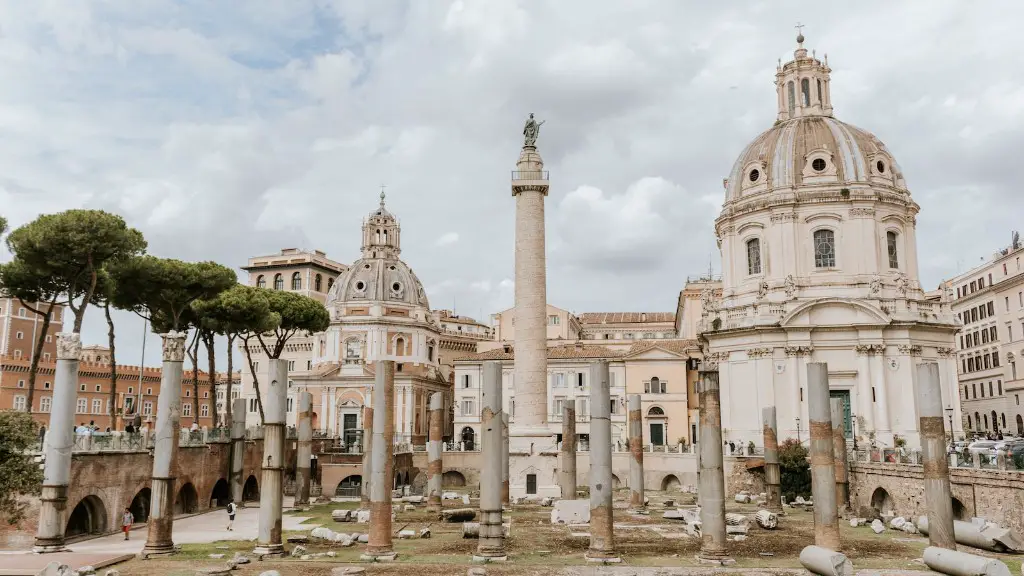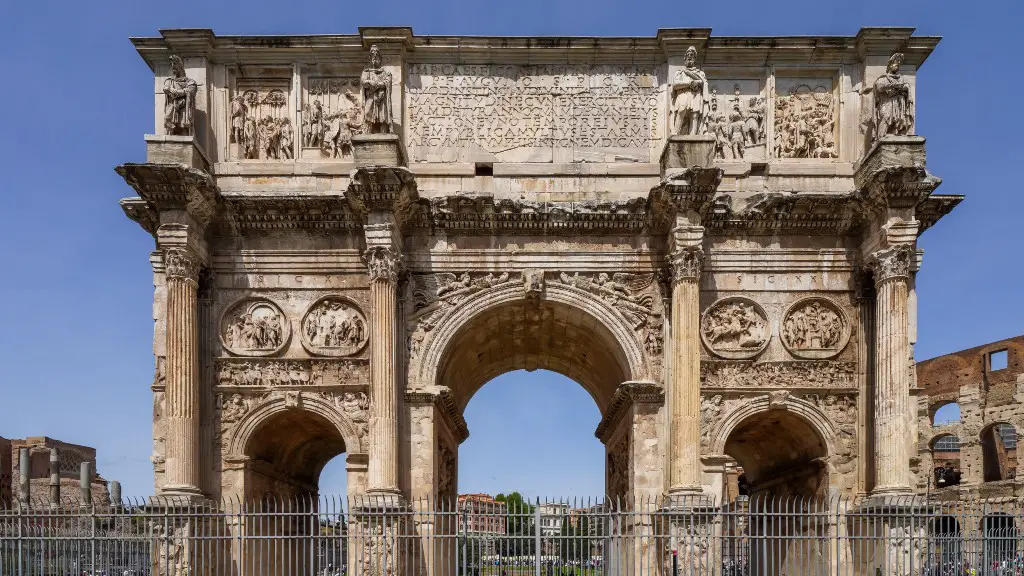Overview of Ancient Rome & Mortar
Mortar is a building material used to bind structures of stone, brick, tile and concrete. It has been used in construction for over 5,000 years and is still popular in home and commercial building projects today. The Ancient Romans were among the first to develop a successful mortar that was strong enough for their large-scale construction projects, such as public baths, aqueducts, and amphitheaters. This particular type, known as hydraulic mortar, is composed of pozzolanic materials such as volcanic ash and lime, along with water.
The Ancient Romans experienced great success in their construction endeavors thanks in part to the use of hydraulic mortar, which was able to set under water. This was an advantage when building bridges over rivers and canals, as well as aqueducts which brought water over great distances. It was also an advantage when constructing infrastructure in marshy or coastal areas. By taking advantage of this element, the Ancient Romans were able to create monumental structures that have lasted through the centuries.
Inventor of Mortar in Ancient Rome
There is not much known about who actually invented the use of hydraulic mortar in Ancient Rome. However, one theory is that it was the work of Vitruvius, an architect who lived in Rome around 100 BC. Vitruvius wrote about the use of hydrated lime as early as 25 BC, in his famous Ten Books of Architecture. He also wrote about using volcanic ash in the mix, which is an important component in producing a high quality mortar that is resistant to water and other elements.
Vitruvius was an innovative genius in terms of the construction field, introducing a number of advances that had a significant impact on the overall quality of Roman works. He believed in using natural materials such as stone and mortar to create structures that were both elegant and durable. Thus, it can be assumed that he was the one who discovered the properties of hydraulic mortar and its importance in large scale Roman projects.
Methods of Preparation
The Romans developed a fairly simple method of preparing hydraulic mortar, which they called pozzuolana, or pozzolanic mortar. This involved mixing a set ratio of pozzolana, or volcanic ash, and lime, as well as water and sand, to create the desired mix. The ratio and mixture of the ingredients varied somewhat depending on the particular application. For example, building a bridge would require a much thicker mixture than tiling a wall.
In General, the pozzolana and lime were ground together into a thick paste and then mixed with water and sand until a workable consistency was obtained. This particular type of mortar was extremely versatile and could be used for a variety of construction tasks. It could be used for laying bricks, tiling walls and floors, and even for rendering stone walls.
Mortar in Contemporary Times
Today, mortar is still in use in many construction projects. The basic ingredients and preparation methods have remained largely unchanged for centuries. In some cases, modern additives and chemicals can be used to improve the strength and longevity of the mortar. In recent years, there has been increasing interest in using natural and green alternatives, such as hemp or flax seed oil, instead of traditional chemical additives.
Mortar is popular in a wide range of applications, including residential, commercial and industrial building projects. It is also often used for various types of home improvement tasks, such as repointing brick walls, waterproofing basements, and restoring old stone structures.
Benefits of Mortar
The use of mortar provides a number of benefits. First, it can be used to join together a variety of building materials, such as stone, brick, tile, concrete and even wood. This greatly simplifies the construction process, as it eliminates the need to use a variety of separate adhesives and bonding agents.
Second, mortar offers a degree of durability and flexibility that few other construction materials can match. Its high alkalinity helps to protect against the corrosive effects of water and other degrading elements. Finally, mortar can also be used to join and seal window and door frames, which is an important part of making a home or building draft free and energy efficient.
Environmental Effects of Mortar
Mortar is a natural building material that is relatively easy on the environment. Many types of mortar are composed of limestone, which is a naturally occurring substance and does not produce any toxic chemicals or pollutants.
In recent times, there has been more emphasis on using green alternatives, such as hemp or flax seed oil, instead of traditional chemical additives. These green options help to reduce the environmental impact of mortar production and can also lead to a more energy efficient building.
Limitations of Mortar
Despite its many advantages, there are some drawbacks to using mortar. For one, the mortar must be kept dry in order to remain effective. If it gets wet, it can become weak and break down, leading to structural problems.
It also has a fairly long drying time, which can cause delays in construction projects. Additionally, mortar is a relatively weak material and can easily be damaged or degraded by environmental elements.
White Mortar
White mortar is a type of hydraulic mortar that has been cured with the addition of a white-colored limestone mineral known as alberese or biancone. This type of mortar was often used in the construction of ancient Roman public baths and is still used in some areas of the world today.
The use of white mortar in Roman public baths was considered an important way of displaying the wealth and sophistication of the patron. White mortar was also preferred for its aesthetic effect, as it could be used to create clean lines and shapes that could not be achieved with regular mortar.
Trace Minerals in Mortar
Trace minerals, such as magnesium, calcium and iron, are often found in mortar. These minerals are essential for the proper setting of the mortar and can also provide strength and durability to the mortar.
In addition, many trace minerals have antiseptic properties that can help to protect against bacteria and mold growth. This is critical in areas where moisture is common, such as bathrooms and kitchens. Thus, trace minerals can play an important role in improving the overall quality of the mortar.
Conclusion
Mortar has been an important part of building construction for hundreds of years, and it is still widely used today. Its advantages include ease of use, durability and strength, along with a range of green alternatives for production.
The invention of hydraulic mortar in Ancient Rome was a major turning point in the field of construction, paving the way for the grand monuments and cities we see today. While the inventor is unknown, the impact of this discovery was profound and can still be felt today.


